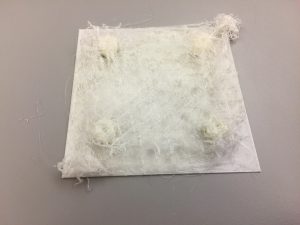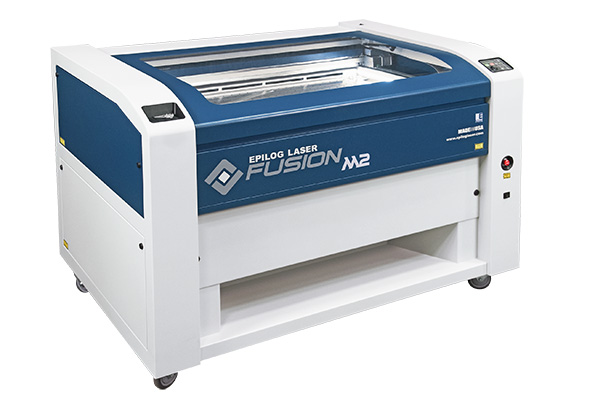In working to bring maker technologies, like 3D printing, laser engraving and cutting, and arduino based electronics, to the campus and into existing workshop and media production spaces, there have been a few lessons we’ve learned along the way. It’s really about a lot of little things that can take the technologies involved from frustrating to fun, and allow things to work seamlessly. There turns out to be a significant number of little and not-so-little things that one needs to manage to make the participant’s experience pleasant and productive. Among those things, humidity matters for 3D print material to work properly, even more with the newer printers. Fresh air and getting rid of fumes is important for a safe and pleasant work environment. Safety training and testing before letting folks use equipment leads to better outcomes all around. Having the right furniture, the right tools and right machines and helping students develop a sense of ownership of the space and tools, all contribute to a better, more productive maker space! All of these elements are best managed by a knowlegeable, experienced shop technician to support the space, with particular experience working in this sort of environment.
3D Printing and Humidity

In 3D printing, we use spools of plastic material. The lower, “Garden Level” of Beardsley Hall, where the primarly public facing parts of ITS are located, is notoriously humid, with many of the offices seeing humidity levels over 75% on a regular basis during wetter times of the year. Many of the plastics we use are hydrophilic (water absorbing). If we’re printing through a lot of material fairly quickly, then there is not much problem, as the spools get used up without much delay, and don’t have time to absorb much

water before being printed. However, if a machine needs to sit for a while, or the humidity is too high, then the saturated material tends to bubble as it comes out of the nozzle, if it does come out at all. This leads to poor adhesion of the material to the model, a very rough surface and jamming of the material in the print head, or spaghetti instead of a coherent object. We’ve opened a stopped print head to find it jam packed inside with material! Even normal room humidity will wreck havoc with some of these plastics over time, if exposed for too long before they’re printed.
Exhaust
Just as with humidity, air quality can be very important. Whether someone is using the laser engraver, soldering in the lab, printing in 3D (which melts the plastic filament before extruding it into the model), or trying to mix woodworking with the more high resolution 3D printing, being able to control and exhaust the dust, fumes and smoke from these devices can make the difference between a coughing fit, headaches and a fun productive environment. To start with, any process that creates a lot of wood dust is not compatible in the same space as the 3D printing technologies, which rely on clean, dust-free surfaces to work, so those operations need to be in separate rooms. We also want to make sure that no-one is exposed unnecessarily to any fine particulates or fumes from the melting of plastics or solder from electronics work. An experienced shop technician will know how to exhaust things properly, and how to integrate a good fresh-air supply too.
Safety
A critical feature of any college shop is its utility and safety for students, faculty and staff to realize and to make their ideas into physical reality. To that end, safety is paramount! Many college shops either restrict student access, allow access only while supervised, require lots of in-person and online training and complete that with practical, in-person testing of students before they’re qualified to operate machinery or systems. This can often be done with more general introductions to shop safety and the systems in the shop, but usually needs to be supplemented with specific qualifications on the individual machines to be used. We’ve also found that the right type of fire extinguisher can make a big difference in repair costs, if they need to be used. Having a knowledgeable and experienced shop technician to organize, devise and supervise students can make the difference between frequent failure and a working, welcoming space and one that can only be used by appointment with supervision.
The Right Tools
One of those elements of safety and utility is having the right hand-tools around for participants to use. One needs both the machine specific tools that keep systems operating correctly, and the hand tools that will be useful in putting together the created objects. Hand tools are notorious for being “permanently borrowed” from public shop spaces, so a clear method for keeping such tools at hand, and well written policies can only help. Some will dip or paint their tools with bright colors and then develop a culture of shop maintenance amongst the users. A great shop coordinator will help the users develop a sense of ownership and agency in the shop that can lead to better shop conditions as everyone picks up and puts away tools and material when they are done with it.
Furniture & Cabinetry
Little things like the furniture on which students will build projects, the cabinetry in which tools and material are stored and the chairs and stools to be use by students all contribute to the function of a workshop. Do the benches or shelves on which your 3D printers sit allow you to readily access the back for quick material changes and reloads? Do you have solid workbenches on which folks are not afraid to make a scratch? Do your cabinets and benches allow storage underneath for machine supplies or tools? Is your lighting enough to let participants really see what they want to work on? All of these contribute to the workability of the shop space. As we develop the new maker space in Beardsley, we will continue to both lean on our peer institutions for ideas and evaluate the solutions we find work here.
The Right Machinery
Finally, one of the more important elements of shop management are machine choices. While there might be a new device that will do X out there, and that would be really cool, a shop coordinator needs to keep an eye on the tools that will be supportable and durable in a multiuser environment. In this case, we’ve chosen 3D printers that meet specific educational goals as well as have a reputation for support of the companies and vendors, and of modularity and ease of maintenance. For a small College such as ours, having vendors that can readily back up their machines can be crucial. Durable machines and tools go a long way towards a manageable maker space!
Wrapping Up
As we’ve learned a great deal through the past five years or so, since the purchase of our first 3D printer, we’ve also continued to look for more and better ways to make these fascinating resources more available to students, faculty and staff here at Swarthmore. The experience we’ve gathered with all of these little things is just the start of the process of creating an effective all-campus space for making. Please join us for one of our many making workshops, or just stop by to chat about your next project idea and how it can be realized physically, or enhanced with a physical model. Your Academic Technologists, Doug Willen (willen@swarthmore.edu, x-7787) or Andrew Ruether (aruethe2@swarthmore.edu, x-8254), will be happy to help get you started!

